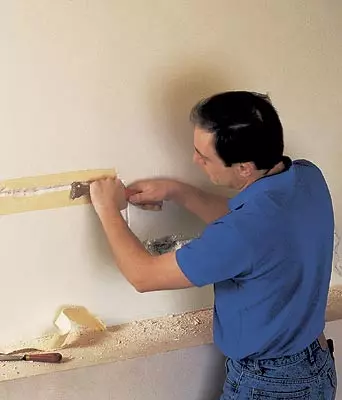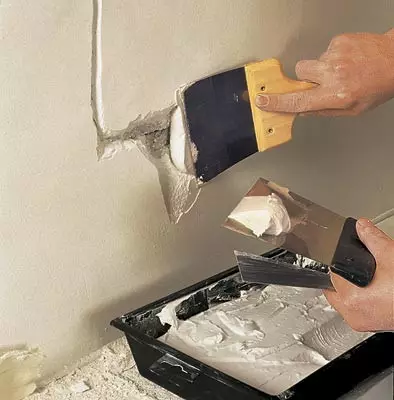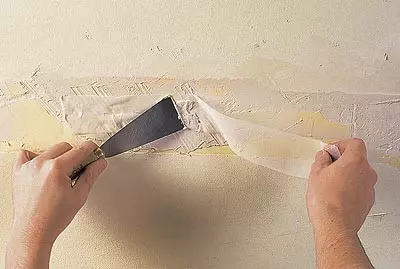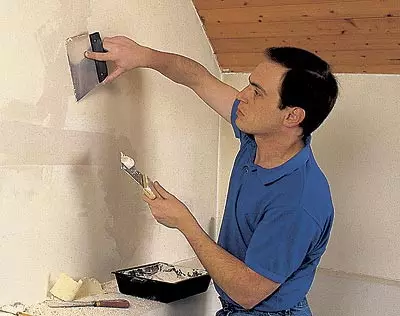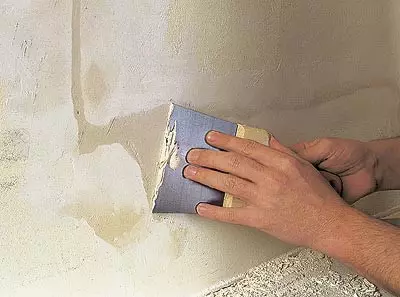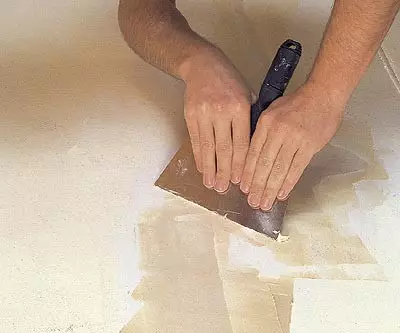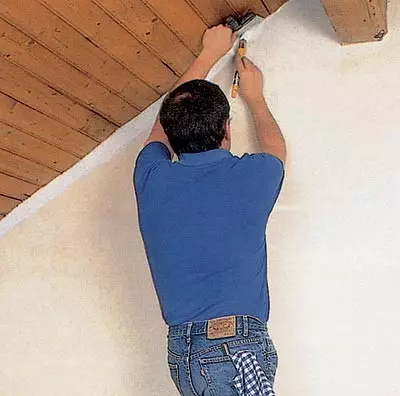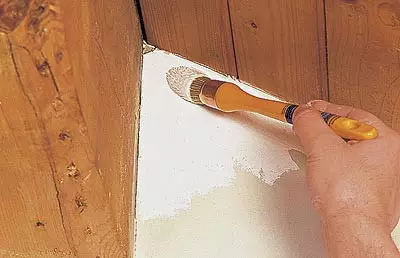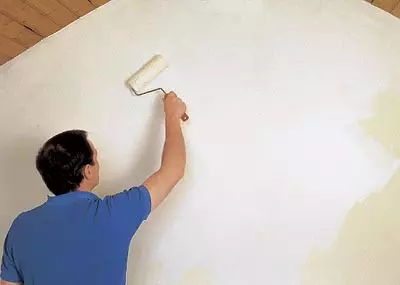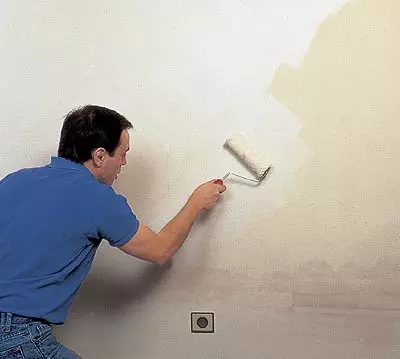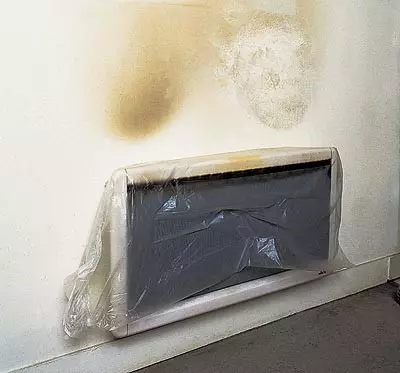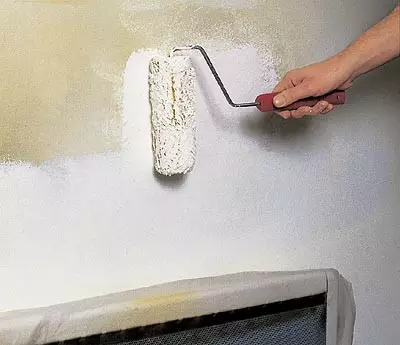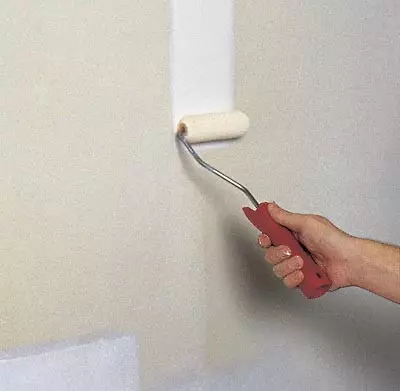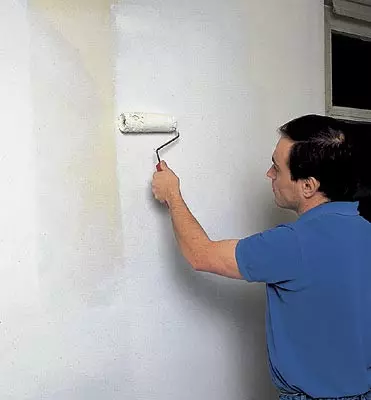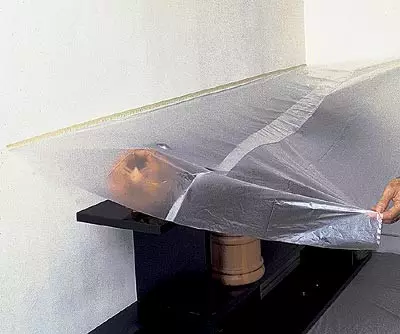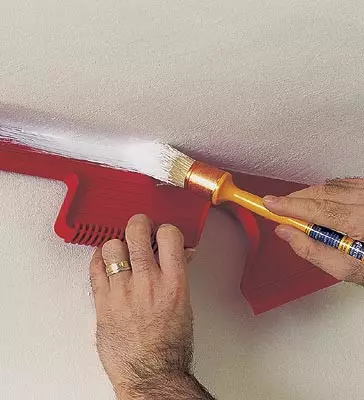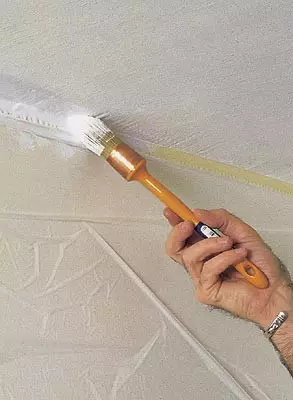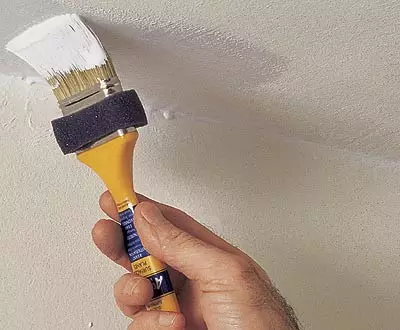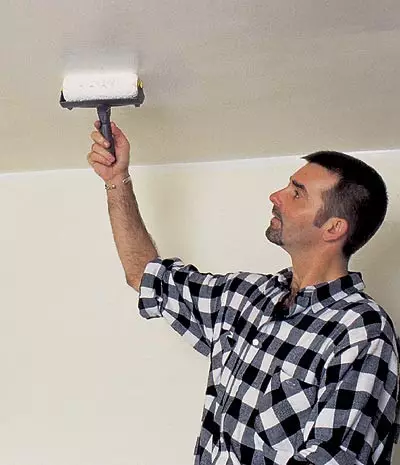Some secrets of painting work. Our tips will help you become a real ASA in paintwork.
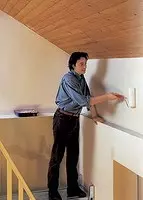
Probably, everyone had to at least once to engage in painting works, if necessary, or from pleasure, but the result did not always justify expectations. Inesley tool to purchase is easy, then the necessary skills are much more difficult. Do not despair, some patience and our advice will help you become a real as a
Preparatory work
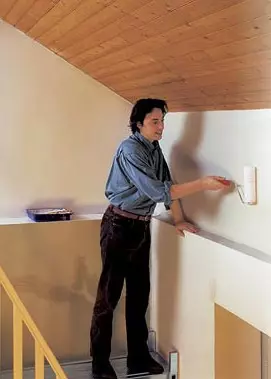
Your goal is to make walls as smoother and smooth. To begin with, we are thoroughly flushed, removing mold and stains formed as a result of leaks, silent and fill in putty cracks, and those that tend to expand, cover with crankhor ribbons (construction bandt). For small defects, use a solution for brickwork. Deeper cracks to put a putty several times.
At the same stage, spend other necessary work: Align the corners, transfer the door, change the window or make recesses for laying electrical wires and optional switches. If the walls need to be repaired, then the ceiling and the floor are probably in the same condition. They can be updated using olifa, glaze or paint - your choice. When the preparation is finished and putting dried, carefully clean from dust and close all the surfaces that can be stained.
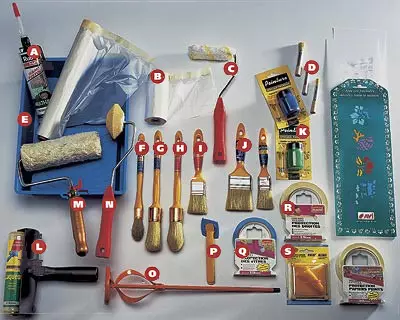
IN - Film with self-adhesive edges (2 size).
FROM - Narrow roller.
D. - screen brushes (3 times).
E. - Bath.
F. - Little round brush for acrylic paints.
G. - A large round brush for acrylic paints.
N. - The same as F, but for glyphthalic paints.
I. - Flat brush for acrylic paints.
J. - Same for glyphthale paints.
K. - Acrylic paint for stencil.
L. - roller with a protective casing.
M. - roller with a pile of medium length.
N. - Corner roller.
O. - Special nozzle-mixer on the drill.
P. - Tampon for paint.
Q. - restrictive sticky tape for glasses.
R. - restrictive sticky tape for straight lines.
S. - Tampon for paint.
Thoroughly align the surface
Thermal destruction and holes in brickwork or plaster are closed with putty for internal (or external / internal) works sold in dry form.
Small flaws on plaster, brickwork or wooden coating are processed by fine-dispersed putty, ready for use and packaged in tubes or banks. Her granules is smaller than that of the powder produced.
Small defects can be smeared with acrylic paste from a tube or extrusion pistol.
For strongly damaged plastered surfaces, the most suitable and least expensive material is gypsum. His advantage is that he will quickly dry, although because of this, the work will have to accelerate.
Porous surfaces (plaster, wood and its derivatives, cement, stone, brick) are not easy to paint, and even more so covered enamel. Therefore, first need to be primed. The primer-fixer is applied as the paint and gives the surface the necessary density so that the paint does not absorb.
Damage to the walls in rooms with high humidity is eliminated by waterproof putty. For the lacquered surfaces, there are special ready-to-use putty, which make the surface with solid and non-transmitting moisture.
| Terminated cracks using a triangled or flat shabra. Eugene in the form of the letter "V" putty or mastic on a dispersed basis will hold better. |
| Clean the cracks from dust and, if they do not have tendencies to increase, fill them with a thick putty, which should not be drained from the spatula. |
| The increasing crack is embarrassed by a putty, in which the knee ribbon "takes off" (construction bandage). |
| The tape should be located deep enough, otherwise after grinding it will manifest on the surface. Apply a layer of putty and twist it on both sides of the crack with a wide spatula. |
| Before the putty will dry, align the surface with a well-sharpened spatula. It must be wide enough to capture both sides of the crack at the same time. |
| To complete the finishes, impose a thin layer of fine-dispersed or fatty putty with a thinner structure than the usual. When it dries, treat the wall of the wall with a grinding bar with a shallow skin, and even better, the grinding machine. The skirt is not too much to press the wall so that the recesses are not formed. |
Acrylic paint and semiamatic
This type of paints got its name from binder substances, acrylic resins forming a solid film after evaporation of the solvent (in the case of water). Acrylic paints are suitable for almost all surfaces. They are easy to use, quickly dry, which allows you to apply the second layer, on average, four hours after the first, indispensable if you want to have a matte or semi-wave surface. Another indisputable advantage of acrylic paints is that they are deprived of an unpleasant smell, and the tools after work are easily laundered with water.
Glyphthaled colors and semiamatic
Due to the properties of its binder (alkyd resins), these paints dry out in air due to the oxidation process. They can be used in wet rooms, since after drying the surface becomes waterproof. Glyphthalic paints are opaque, well fall and have the effect of a stretched film. Inesl for a long time they were not particularly recommended for residential premises due to strong smell, now the situation has changed.
Glossy paints
Glossy there are acrylic, and glyphthalic paints, combined under the general title - enamel. They dry quickly, are bred by white spirit or water, they are like a smell, and without. Such paints can be offered for wet or especially subjected to indoor pollution.
Special paints
Ceilings that are harder to put on how to paint, can be delivered from small defects with special paints, in which elastic resins form a film smoothing small irregularities. Special anti-corrosion paints (based on alkyd resins, without lead) can be used without pre-processing of metal surfaces with anti-corrosion coating. Paints for processing a tree with micropores that allow the tree to breathe, sometimes contain fungicidal and bactericidal components that prevent the formation of mold.
Not so long ago, insecticidal, bactericidal and fungicidal paints, specially designed to destroy and scare insects, as well as counteract the pathogenic organisms and allergens. Safe for humans and pets The way of combating pests is the so-called "emission system", due to which microcrystals of active substances remain on the surface of dried paint, selectively killing organisms included with them in contact.
Our advice
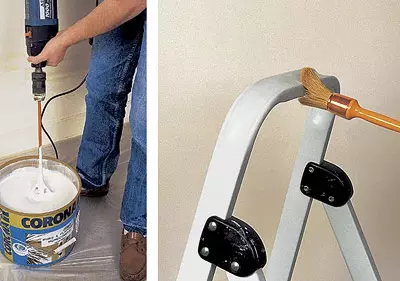
Start painting
| Start painting from the corner between the wall and the ceiling using a round pointed brush. In order not to climb on the border area (the ceiling, beams, and the like), you can either be very gently and slowly taking a brush line, or use the protective device with a restrictive adhesive tape or a wide spatula that you need to gradually move. |
| Color the corners by driving a brush to the center. Folding sufficient area, start working with roller. |
| Even if the paint is designed to apply one layer, the surface texture requires two. Coloring is made by cross-strokes to ensure the uniform of the colorful layer and so that the traces of the roller are not visible. |
| Before starting the color of the wall, make sure you have enough time to finish it. After completing the work, do not apply paint on the handled wall so that after drying it does not acquire different shades. |
| This looks like a wall on which the convector hangs. In addition to dark stripes, a light spot remains on the wall. Washing out the lid, cover the device with a protective film. |
| Apply the first very thin layer of paint on a dry wall. |
| Then roller on the most dark stain limits. |
| Now paint the entire remaining area to achieve color homogeneity. |
Pray, not stupid
Spring soon and maybe it is worth repainting everything in the house. But it's not enough! A carpet, a sofa, shelves, a TV, a cat and other home Skarba have nowhere to do (however, the cat is likely to run away after). True puzzle- How to paint the walls, nothing stains. After all, you need to start with the ceiling! Choose good tools and suitable paint - and you will avoid disappointment!
| To protect furniture and gender, use instead of rags and newspapers plastic covers or polyethylene film. However, they are not always durable. Elektostatic films with adhesive edges are best suited, which can be strengthened on the wall, stretch and cover the furniture. They are produced in various sizes (20m110cm, 7m55cm, 24m55cm). |
| So that when staining the ceiling is not staining the wall, you can use protective screens, a wide plate, or treads from polychlorvinyl (provided that the walls are perfectly smooth). Use a suitable brush (round, for acrylic paints), but do not press it too much. |
| The use of electrostatic film with adhesive edge is possible even on uneven surfaces. |
| For coloring the ceiling, choose more thick paints. Protective cap on the tassel will save your hands clean. |
| There are various rollers with a protective casing, their choice depends on the type of surface and paint. The use of these rollers allows you to comply with cleanliness, but requires some skill: they need to be kept a little differently, which is quite tedious. |

